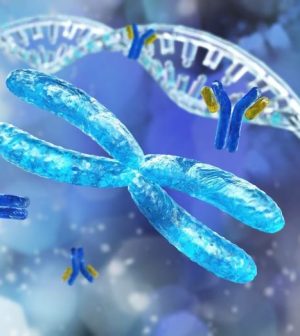- Understanding the Connection Between Anxiety and Depression
- How Daily Prunes Can Influence Cholesterol and Inflammation
- When to Take B12 for Better Absorption and Energy
- Epsom Salts: Health Benefits and Uses
- See What Saffron Can Do for Sleep and Heart Health
- 6 Common Mistakes to Avoid Before Your Physical
- Can Sweating Really Help You Beat a Cold?
- Strengthening Your Relationship: Practical Strategies
- Skip Storing This Everyday Product in the Fridge Door
- Green Tea + B3 Pairing May Boost Brain Health
‘Ancient Gene Bank’ Gives Clues to Diseases Common to Europeans

DNA locked in the bones and teeth of more than 5,000 humans who lived in Asia and Europe up to 34,000 years ago are providing vital clues to a myriad of present-day medical conditions.
The descendants of these ancient peoples are living now in Europe and throughout the world. But their forebearers’ genetic legacy lingers, according to researchers who presented their findings in four studies published Jan. 10 in the journal Nature.
One major discovery: Northern Europeans have relatively high rates of multiple sclerosis because their farmer ancestors carried a gene protecting them from diseases affecting sheep and cattle.
The gene variants linked to MS were brought to Europe about 5,000 years ago by what are called the Yamnaya people — livestock herders who migrated through Russia, Bulgaria and Romania to settle in North-Western Europe.
Because of the constant threat of animal-borne disease, “it must have been a distinct advantage for the Yamnaya people to carry the MS risk genes, even after arriving in Europe, despite the fact that these genes undeniably increased their risk of developing MS,” said Eske Willerslev.
He conducts research jointly at the universities of Cambridge and Copenhagen and is an expert in analysis of ancient DNA. He’s also director of the ancient gene bank project.
The MS discovery is much more than a look at the distant past, Willerslev stressed.
“These results change our view of the causes of multiple sclerosis and have implications for the way it is treated [today],” he said in a University of Cambridge news release.
Specimens of teeth and bone DNA used in the study ranged from the Mesolithic and Neolithic ages through the Bronze Age, Iron Age and Viking period into the Middle Ages. The most ancient genome in the data set is from a person who lived about 34,000 years ago, the researchers noted.
Data from the ancient remains were compared to that of modern DNA from 400,000 people living in Britain. That data set is held in the UK Biobank.
The results “astounded us all,” William Barrie, a postdoc in the University of Cambridge’s zoology department, said in the news release.
“They provide a huge leap forward in our understanding of the evolution of MS and other autoimmune diseases,” he said. “Showing how the lifestyles of our ancestors impacted modern disease risk just highlights how much we are the recipients of ancient immune systems in a modern world.”
Other findings from the research project:
-
Height. Northern Europeans tend to be taller than folks born in southern Europe, and they can credit the same Yamnaya people for the genetics behind that.
-
Risks for other illnesses. Ancient farmer DNA concentrated in southern Europeans may place them at higher risk for bipolar disorder, while ancient genetics may raise risks for Alzheimer’s disease and type 2 diabetes in eastern Europeans.
-
Lactose tolerance. Early humans couldn’t digest milk after weaning as children, but a tolerance to milk among adults probably appeared in Europe about 6,000 years ago.
-
Eat your vegetables: An ability and tolerance to live solely on a vegetarian diet probably emerged about 5,900 years ago in Europe.
“It’s striking that the lifestyles of the people in the Eurasian region over the last 10,000 years have resulted in a genetic legacy that impacts their present-day descendants, in terms of both their physical appearance and their risk of developing a number of diseases,” Evan Irving-Pease at The Globe Institute, University of Copenhagen, said in the news release. He’s lead author of one of the papers.
More information
Find out more about ancient genetics in a study published last year in Nature Medicine.
SOURCE: University of Cambridge, news release, Jan. 10, 2024
Source: HealthDay
Copyright © 2026 HealthDay. All rights reserved.










